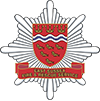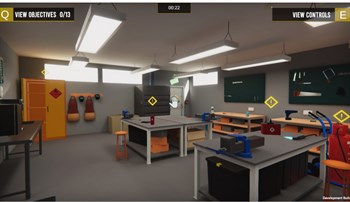Fire safety is one of many safety issues with which the responsible person must deal with to minimise the risk of injury or death to staff or the public.
Good management of fire safety is essential to:
- make sure that fires are unlikely to occur;
- that if they do occur they are likely to be controlled or contained quickly, effectively and safely; or that,
- if a fire does occur and grow, everyone in your premises is able to escape to a place of total safety easily and quickly.
The risk assessment that you must carry
- will help you make sure that your fire safety procedures, prevention measures, and precautions (plans, systems and equipment) are all in place and working properly,
- and should identify any issues that need attention.
As the responsible person you must carry out and regularly review a fire risk assessment of the premises. This will identify what you need to do to prevent fire and keep people safe.
You must keep a record of your fire risk assessment.
Carrying out the 5 stages of a risk assessment
The Fire Risk Assessment Competency Council Guide to Choosing a Competent Fire Risk Assessor is is an easy-to-read introduction to choosing a competent fire risk assessor.
The Council has also published a set of criteria against which the competency of those undertaking fire risk assessments can be judged.
- Offices & Shops
- Sleeping accommodation
- Educational premises
- Large places of assembly
- Open-air events & venues
- Animal premises & stables
- Factories & warehouses
- Residential care premises
- Small & medium places of assembly
- Theatres, cinemas & similar premises
- Healthcare premises
- Transport premises and facilities
- A guide to making your small block of flats safe from fire
- A guide to making your small non-domestic premises safe from fire
- A guide to making your small paying-guest-accommodation safe from fire
As a new owner or manager of a small business, the fire safety law for the workplace can seem quite daunting. This tool has been designed to give a fun and interactive experience and at the same time give you a general overview of your responsibilities following a fire risk assessment on your premises. As you work your way around your workplace, correcting the identified issues and making it safer, you will be tested on your general fire safety knowledge.
Now test yourself and see what you already know – click on the screenshot below to enter.
(If you are having trouble controlling movement around the tool, please look to reduce the sensitivity of your mouse).
Please note that this tool is for general fire safety awareness in the workplace, it is not intended as training tool for completing a Fire Risk Assessment.
The calculator helps evaluate four key areas:
- Building knowledge,
- Fire protection systems,
- Training and competency
- Organisational resilience
Fire safety within the home and in commercial property is an important issue, especially;
- in shared premises such as houses in multiple occupation, where common areas are shared,
- in mixed use premises where commercial activities are undertaken adjacent to living accommodation,
- in shared houses and blocks of flats where unrelated occupiers, who live independently from one another, share common areas and escape routes from the same building.
When it comes to fire safety, everyone involved, including residents, have an interest. However there is a duty under legislation placed upon the responsible person, normally the Owner, Landlord or Managing Agent to carry out a suitable and sufficient fire risk assessment.
This will identify all the risks and hazards from fire and detail any required improvements in significant findings. Undertaking such works will ensure their property has adequate and appropriate fire safety measures in place.
This duty cannot be delegated or avoided.
All residents and interested parties should be made aware of the significant findings so that where appropriate their part can be played in contributing to the premises fire safety (i.e. by keeping pushchairs out of the fire escapes and not wedging fire doors open).
Advice & Guidance
Where necessary, advice on enforcement matters can be sought from the Local Housing Authority or the local Fire Authority. Advice on general fire precautions is available from three key documents:
LACORS: Housing Fire Safety
This document provides guidance on fire safety provisions for certain types of existing housing.
This guidance helps to manage the relationship between the Housing Act 2004 and the Fire Safety Order by providing benchmark standards for fire risk assessment and practical advice to make existing residential buildings safe from fire.
Fire Safety in Purpose Built Blocks of Flats
This document, Fire safety in purpose-built blocks of flats*, is a guide to ensuring adequate fire safety in purpose-built blocks of flats, regardless of age.
Practical advice is offered on how to assess the risk from fire and how to manage fire safety in such buildings.
The document also includes case studies based on the commonly found issues in blocks of flats, with suggested fire safety solutions.
*IMPORTANT UPDATE: This guide was produced in 2011. It is no longer comprehensive and should be read alongside the Ministry of Housing, Communities and Local Government’s Consolidated Advice Note and the National Fire Chief Council’s guidance on simultaneous evacuation.
HM Government Guide to Fire Safety Risk assessment: Sleeping Accommodation.
Within this guidance, the responsible person may find benchmark standards for general fire precautions for a wide variety of premises used as sleeping accommodation, including;
- hotels,
- self-catering accommodation and
- residential accommodation,
- some reference is made to flats
This document is a guide on completing a fire risk assessment for all types of sleeping accommodation. In light of case law and greater interpretation of the above legislation, the above guides are now used more frequently.
B&B Premises
A leaflet, produced by the Chief Fire Officer's Association, provides general fire safety advice for those running B&B premises.
Legislation
Fire safety in residential accommodation is covered by both of the:
Further advice
Advice may also be sought from other sources such as Trade Associations and competent fire safety consultants.
Although the Fire Authority may provide limited advice the duty to ensure that all people using the premises are safe from the effects of a fire rests with the responsible person.
Examples of how a fire may start can be found on the Heads Up website.


